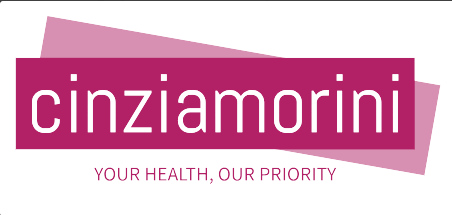
Attention-Deficit/Hyperactivity Disorder (ADHD) and anxiety are common mental health conditions that can significantly impact an individual’s daily life. While medication and therapy are often essential components of treatment, exercise is a powerful, yet often underutilized tool that can help alleviate symptoms of both ADHD and anxiety. This article explores how regular physical activity can contribute to better management of these conditions and improve overall well-being.
Understanding ADHD and Anxiety
What is ADHD?
ADHD is a neurodevelopmental disorder characterized by symptoms such as inattention, hyperactivity, and impulsivity. These symptoms can interfere with academic, professional, and social functioning. Medications like Ritalin are commonly prescribed to help manage these symptoms. For those who need it, purchasing ritalin online can be a convenient option through reputable sources.
What is Anxiety?
Anxiety involves excessive worry, fear, or nervousness that can be overwhelming and interfere with daily activities. It includes conditions such as Generalized Anxiety Disorder (GAD), social anxiety, and panic disorder. Medications like Xanax are often used to manage anxiety symptoms. Reliable sources to buy xanax online can ensure safety and effectiveness.
The Benefits of Exercise for ADHD and Anxiety
How Exercise Helps ADHD
Improved Focus and Attention
Exercise increases the levels of neurotransmitters such as dopamine and norepinephrine in the brain, which are critical for attention and focus. These are the same neurotransmitters targeted by ADHD medications like Ritalin.
- Aerobic Exercise: Activities like running, swimming, and cycling can significantly improve attention and reduce impulsivity in individuals with ADHD.
Enhanced Executive Function
Regular physical activity has been shown to improve executive functions, including working memory, cognitive flexibility, and inhibitory control. These improvements can help individuals with ADHD better manage their symptoms.
Reduced Hyperactivity
Engaging in physical activities can help channel hyperactivity into productive and beneficial outlets, reducing the disruptive symptoms often associated with ADHD.
How Exercise Helps Anxiety
Stress Reduction
Exercise is a natural way to reduce stress. Physical activity helps lower levels of the body’s stress hormones, such as adrenaline and cortisol, and stimulates the production of endorphins, which are natural mood lifters.
- Mind-Body Exercises: Practices like yoga and tai chi combine physical movement with mindfulness and breathing techniques, which can be particularly effective for reducing anxiety.
Improved Mood
Regular exercise can help alleviate symptoms of depression and anxiety by increasing the production of endorphins and serotonin, neurotransmitters that promote feelings of well-being and happiness.
Better Sleep
Exercise can improve sleep quality, which is often disrupted by both ADHD and anxiety. Better sleep leads to improved mood, concentration, and overall mental health.
Types of Exercise Beneficial for ADHD and Anxiety
Aerobic Exercises
- Running: Boosts cardiovascular health and increases the production of neurotransmitters that aid focus and reduce anxiety.
- Swimming: Provides a full-body workout that is also relaxing and meditative.
Strength Training
- Weightlifting: Helps build physical strength and endurance, boosting confidence and reducing symptoms of anxiety.
- Resistance Bands: An excellent alternative for building strength without the need for heavy weights.
Mind-Body Exercises
- Yoga: Combines physical postures with breathing exercises and meditation, making it effective for reducing anxiety and improving focus.
- Tai Chi: A form of martial arts that promotes relaxation and stress reduction through slow, deliberate movements.
Recreational Activities
- Team Sports: Engaging in sports like basketball, soccer, or volleyball can improve social skills, reduce hyperactivity, and decrease feelings of anxiety through teamwork and physical exertion.
- Dancing: Combines physical exercise with creativity and social interaction, making it a fun and effective way to manage symptoms.
Integrating Exercise into a Treatment Plan
Creating a Routine
Consistency is key to reaping the benefits of exercise. Aim for at least 30 minutes of moderate-intensity exercise most days of the week. This can be broken down into shorter sessions if needed.
Combining with Medication
Exercise can complement the effects of medication. For instance, those taking Ritalin for ADHD may find that incorporating regular exercise enhances their focus and reduces symptoms. Similarly, individuals taking Xanax for anxiety may experience additional relief from exercise-induced endorphin release.
Professional Guidance
Consulting with healthcare providers can help tailor an exercise regimen that meets individual needs and complements other treatments. They can provide recommendations on the type and intensity of exercise most suitable for managing symptoms.
Conclusion
Exercise is a powerful tool that can significantly alleviate the symptoms of both ADHD and anxiety. By improving focus, reducing hyperactivity, lowering stress, and enhancing mood, regular physical activity can contribute to a comprehensive treatment plan. While medications like Ritalin and Xanax are essential for many, integrating exercise into daily routines offers a natural and effective way to improve overall mental
health and well-being. For those managing ADHD and anxiety, consider combining these strategies for optimal results. Always consult with healthcare professionals to ensure a balanced and effective approach tailored to individual needs. Reliable sources to purchase medications such as Ritalin online and Xanax online can provide the necessary support alongside these lifestyle changes.
